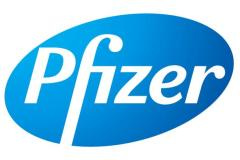Once upon a time in a land far, far away there was a little antibiotic biotech. The people who worked there were working on a not so new, but unique inhibitor of bacterial beta-lactamases. For those of you not familiar with this, these inhibitors block the most common bacterial resistance mechanism to some of the safest and most commonly used antibiotics, the beta-lactams (relatives of penicillin). The company was Novexel and it was located just outside Paris. The year was, say, 2007 (or thereabouts). The unique beta-lactamase inhibitor is avibactam – the first marketed non-beta-lactam beta-lactamase inhibitor. I worked there as a consultant and even as an acting Chief Scientific Officer and Board member from 2006 until the company was sold to Astra-Zeneca in 2010. At that time, Forest Pharmaceuticals also had rights to avibactam in North America. AZ would be limited to ex-North American rights.
Novexel had chosen to develop avibactam in combination with ceftazidime. Ceftazidime was by then a generic broad-spectrum antibiotic that targeted Gram-negative pathogens from E. coli to Pseudomonas aeruginosa. It was used often by clinicians and most hospital-based clinicians were familiar with ceftazidime. Phase I trials began shortly after my arrival at Novexel. As always, we constantly thought about the future for avibactam, for patients and for the company.
Avibactam’s weak spot is that it does not inhibit one type of beta-lactamases in particular – the so-called metallo-beta-lactamases (MBLs). MBL-producing bacteria are very highly resistant even to our most powerful antibiotics. Ceftazidime is easily destroyed by these bacterial enzymes. Therefore, ceftazidime-avibactam is not active against bacteria producing MBLs. We also knew that another antibiotic, very similar to ceftazidime in structure called aztreonam, was not destroyed by MBLs and that aztreonam-avibactam combinations were very active against bacteria producing these enzymes. Aztreonam-avibactam was also active against essentially all the Gram-negative pathogens covered by ceftazidime-avibactam plus it took care of the avibactam weakness. What to do?
Well, safety studies and clinical studies with ceftazidime-avibactam had been started or completed. None of those is cheap. Novexel was a biotech that did not have unlimited resources. And, at that time, Novexel had to take into account the opinion of its partner, Forest Pharmaceuticals. Clinicians were very familiar with ceftazidime, but aztreonam was only very rarely used in the clinic. Bacterial MLB-based resistance at the time was uncommon (in spite of several outbreaks) and geographically rather isolated. All these considerations and perhaps others led us to designate aztreonam-avibactam as more of a follow-on antibiotic. Something that could be developed in the future.
In addition to examining the aztreonam-avibactam combination, Novexel had a significant antibiotic discovery effort ongoing to find improved versions of avibactam as another follow-on program.
We initiated a variety of in vitro and animal studies with aztreonam-avibactam – but that is as far as we got. Then, in early 2010, Astra-Zeneca took over. Both aztreonam-avibactam and our backup inhibitor discovery program seemed to disappear from the face of the earth.
As it happens, maybe a year or two later, I was asked to consult for Astra-Zeneca’s antibacterial discovery group. I was living on the East coast and AZ was outside of Boston. I went to a first advisory board meeting that focused entirely on projects that had nothing to do with beta-lactam antibiotics. So, in my inimitable style, I enquired as to what happened to all the Novexel programs that AZ had inherited. Silence. I then learned that none of those efforts had been thought to be high enough priority for the AZ group. Of course, who am I to argue? It was their company. After the meeting, I was told that all this was being “reconsidered.”
Not long after all this, AZ abandoned antibiotic R&D and spun out a small biotech called Entasis. Entasis kept all the beta-lactamase inhibitor work from Novexel and actively worked on the program. This led to sulbactam-durlobactam that was recently approved and to other inhibitor combinations that were being researched when Entasis was taken over by Innoviva.
See a little more history here -
Ceftazidime-avibactam and the avibactam rights were sold by AZ to Pfizer in 2016. Pfizer has just now completed phase 3 trials of aztreonam-avibactam 13 years after the combination transferred from Novexel to AZ and 7 years after Pfizer acquired the rights to the combo. I am happy to see that aztreonam-avibactam will finally see the light of day and yet, I wonder what took so long . . .






A too classic history (whether biotech or medtech) of a program which got lost in the strategic reconsiderations and reorganisations of the acquirer(s); at least, despite significant delays, patients should benefit from it eventually. Let's hope that with the latest ESG pressure coming from all sides this might change priorities and large companies shall feel less accountable first to the bottom line (much needed though, as less profit means less investments) so as to support to the finish line less cash generative but yet live saving programs. Some clever economic incentives for all stakeholders would only help for sure.